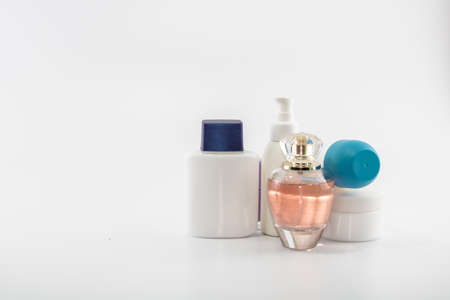Introduction to Serum Layering in British Skincare
In recent years, the practice of layering serums has become increasingly popular within the UK’s vibrant skincare community. British beauty enthusiasts are embracing a more mindful approach to daily routines, focusing on gentle, effective care that respects the skin’s natural balance. This surge in popularity is driven not only by access to innovative products but also by a cultural preference for understated elegance and subtlety in personal care. While the trend may have roots in global skincare traditions, British consumers tend to favour routines that are both minimal and highly efficacious—placing value on products that deliver results without overwhelming the skin.
The importance of serum layering lies in its ability to address multiple skin concerns at once, from hydration and brightening to anti-ageing and soothing sensitive complexions. However, British skincare culture leans towards patience and prevention rather than dramatic overnight transformations. As such, there is a growing awareness about the need for safe practices when combining serums, emphasising the benefits of gradual integration and attentive observation. In this article, we’ll explore how to safely layer serums, reflect on key preferences unique to the UK, and consider which combinations are best avoided for maintaining healthy, radiant skin.
2. Understanding the Basics: Why Combine Serums?
Combining serums has become a cornerstone of modern British skincare, enabling enthusiasts to tailor their routines and address multiple concerns at once. The benefits of layering serums are rooted in their ability to deliver concentrated active ingredients directly to the skin, working synergistically for enhanced results. For example, while one serum may provide intense hydration, another can target pigmentation or fine lines, creating a bespoke solution that responds to your skin’s unique needs.
When serums are combined thoughtfully, their active components often complement each other, amplifying their efficacy without causing irritation or diminishing their effects. This synergy is particularly valued in the UK, where the climate and urban environment can demand both protective and restorative skincare approaches.
How Do Serums Work Together?
| Serum Type | Main Benefit | Common Pairing |
|---|---|---|
| Hyaluronic Acid | Hydration | Vitamin C or Niacinamide |
| Vitamin C | Brightening & Antioxidant Protection | Hyaluronic Acid |
| Niacinamide | Soothe & Reduce Redness | Zinc, Hyaluronic Acid |
| Retinol (Vitamin A) | Anti-ageing & Cell Renewal | Hyaluronic Acid (avoid Vitamin C at same time) |
Essential Rules for Safe and Effective Layering in British Skincare:
- Apply from thinnest to thickest: Start with water-based serums and finish with oil-based or creamier ones.
- Avoid ingredient clashes: Some actives, like retinol and vitamin C, should not be mixed in the same routine.
- Allow absorption time: Let each serum absorb fully before applying the next layer.
- Simplify when unsure: If you’re new to layering, start with two complementary serums and gradually introduce others as needed.
- Cater to your climate: In the UK’s variable weather, focus on hydrating and barrier-supporting serums during colder months.
This mindful approach ensures that your skin receives the maximum benefit from each product while maintaining balance and comfort—a core principle in British skincare culture.

3. Serums Best Paired Together
Combining serums in your daily skincare routine can yield remarkable results when done correctly, and British skin experts often recommend certain pairings for enhanced benefits. Understanding which serums complement each other not only helps you achieve a radiant complexion but also ensures your skin remains healthy and protected, especially in the UKs ever-changing climate.
Popular Serum Combinations Recommended by UK Skincare Experts
Here are some of the most favoured serum pairings embraced by British dermatologists and facialists:
| Serum 1 | Serum 2 | Key Benefits | How to Layer |
|---|---|---|---|
| Hyaluronic Acid | Vitamin C | Deep hydration, antioxidant protection, brightening dull skin—ideal for combating typical UK weather stressors. | Apply Vitamin C first on cleansed skin, followed by Hyaluronic Acid to lock in moisture. |
| Niacinamide | Zinc | Blemish control, soothing redness, balancing oil production—perfect for unpredictable British climates. | Use Niacinamide serum, then follow with Zinc-infused formulas if using separately. |
| Peptides | Ceramides | Smooths fine lines, strengthens skin barrier—ideal for mature or sensitive skin exposed to wind and cold. | Layer Peptide serum before Ceramide serum or cream for best absorption. |
| Retinol (in the evening) | Hydrating Serum (e.g., Hyaluronic Acid) | Smooths texture while preventing dryness from retinol—important during chilly British nights. | Apply Retinol first; after it absorbs, layer on a hydrating serum to soothe and plump. |
Tips for Application and Best Results
- Cleansing: Always start with clean, slightly damp skin to help active ingredients penetrate effectively.
- Order Matters: Apply the thinnest consistency serum first (usually Vitamin C or Niacinamide), followed by thicker serums (like Hyaluronic Acid or Ceramides).
- Pacing: Allow each serum a moment to absorb before layering the next—this prevents pilling and ensures optimal results.
- Mornings vs Evenings: Reserve antioxidants like Vitamin C for daytime use to protect against urban pollution, while retinol-based combinations work best overnight when your skin is in repair mode.
- Sunscreen: Don’t forget to finish your morning routine with a good SPF, an essential step according to UK skincare professionals due to variable sun exposure even on cloudy days.
Nurturing Your Skin the British Way
The secret to glowing, resilient skin lies in understanding how actives interact and tailoring combinations to suit your unique needs. By thoughtfully pairing serums recommended by UK experts—and applying them with care—you’ll enjoy long-term radiance and fortify your skin against the demands of Britain’s environment.
4. Serum Ingredients to Never Mix
When it comes to layering serums, British skincare experts often highlight the importance of knowing which active ingredients can clash when combined. Certain combinations are especially problematic for sensitive UK skin types, often leading to irritation, redness, or compromised barrier function. Below is a table outlining some of the most commonly cautioned-against pairings in British skincare routines:
Ingredient 1 |
Ingredient 2 |
Potential Effects on Skin |
|---|---|---|
| Vitamin C (Ascorbic Acid) | Retinol | Irritation, increased sensitivity, possible dryness or flaking—especially troublesome for delicate or reactive UK skin. |
| Vitamin C | AHAs/BHAs (e.g., Glycolic or Salicylic Acid) | Disruption of skin pH, heightened risk of redness and stinging; not ideal for those experiencing common British weather-induced sensitivity. |
| Niacinamide | Vitamin C | Poor absorption and reduced efficacy, although less irritating than some other pairings. |
| Retinol | AHAs/BHAs | Compromised barrier, excessive peeling or inflammation—can be aggravated by colder climates and central heating in UK homes. |
| Benzoyl Peroxide | Retinol | Severe dryness and irritation; both are strong actives best used at different times of day or on alternate nights. |
The unpredictable British climate—with its damp winters and sporadic heatwaves—often leaves skin more susceptible to disruption. For that reason, it’s vital to avoid mixing serums containing these potent actives unless otherwise advised by a qualified dermatologist. If you’re unsure about combining certain ingredients, seek guidance from a local skincare professional who understands the unique challenges faced by those living in the UK. Emphasising gentle layering and listening to your skin’s needs will help maintain a healthy, resilient complexion year-round.
5. Tips for Creating a Balanced Serum Routine
Nurturing your skin with serums can be truly rewarding, especially when you take a gentle, thoughtful approach that suits the mild and often changeable British climate. Here are step-by-step tips to help you build a balanced serum routine that protects your skin barrier and delivers visible results without irritation.
Step-by-Step Guide for a Gentle Serum Regime
- Start Simple: Begin with one or two core serums, such as a hydrating hyaluronic acid and a soothing antioxidant like vitamin C. This helps you monitor how your skin reacts before introducing more active ingredients.
- Layer Wisely: Apply lighter, water-based serums first, followed by richer or oil-based formulas. Always allow each layer to absorb fully before applying the next.
- Patch Test: Whenever adding a new serum, conduct a patch test behind your ear or on your inner arm to ensure it won’t cause irritation.
- Consider the Weather: In the UK’s cool, damp climate, hydration is key. Focus on serums that boost moisture and support barrier repair, especially during colder months.
- Protect Your Barrier: Avoid over-exfoliating or layering too many actives in one routine. Give your skin days off from strong ingredients like retinol or acids.
Sample Balanced Serum Routine for British Skin
| Time of Day | Recommended Serums |
|---|---|
| Morning | Gentle Vitamin C (antioxidant protection) Hyaluronic Acid (hydration) |
| Evening | Ceramide Serum (barrier support) Peptide Serum (repair & renewal) |
Tips for Adapting to Seasonal Changes
- In winter, prioritise richer hydrating serums and barrier-repair formulas.
- During warmer months, opt for lightweight, non-comedogenic serums to keep skin comfortable but not overloaded.
Caring for Sensitive Skin Types
If your skin is prone to sensitivity or redness, select fragrance-free serums formulated for delicate complexions. Always introduce new products gradually and consult a skincare professional if unsure.
6. Signs You May Be Overdoing It
When it comes to combining serums, a gentle and mindful approach is at the heart of British skincare culture. While layering active ingredients can be beneficial, overuse or incompatible combinations may lead to subtle signs of irritation that are easy to overlook. Recognising these early indicators is vital for maintaining a healthy and radiant complexion.
Common Signs of Overuse or Irritation
| Sign | Description |
|---|---|
| Redness | Slight flushing or patchy areas, especially on sensitive spots like cheeks and nose. |
| Tightness | A feeling of taut skin, often after cleansing or applying serums. |
| Flakiness | Small patches of dry, peeling skin—a common sign when actives are overused. |
| Stinging or Burning | Mild discomfort during application, indicating your skin barrier may be compromised. |
| Bumps or Breakouts | An increase in congestion or spots as your skin reacts to excessive products. |
The British Approach: Listen to Your Skin
In Britain, there’s a time-honoured respect for letting your skin guide your routine. Rather than chasing trends, it’s wise to observe how your complexion responds day-to-day. If you notice any of the signs above, consider simplifying your routine—perhaps pausing stronger actives and focusing on soothing hydration instead. Remember, patience and consistency trump quick fixes in the long run.
Simple Steps if You Suspect Overuse
- Take a break from strong actives such as retinol or acids for a few days.
- Switch to a gentle cleanser and fragrance-free moisturiser.
- Introduce calming ingredients like niacinamide or ceramides.
- If irritation persists, consult with a local pharmacist or skincare professional familiar with UK conditions.
Your Complexion, Your Pace
The most successful British skincare routines are built on understanding and respecting individual needs. Always prioritise listening to your skin—it’s the best guide for lasting health and natural beauty.
7. When in Doubt: Seeking Advice in the UK
When it comes to combining serums in your skincare routine, it’s always best to seek professional advice if you’re unsure. In the UK, consulting with local dermatologists or pharmacists can provide you with personalised recommendations tailored to your unique skin needs. These professionals are well-versed in British skincare trends and familiar with local environmental factors that may influence your skin health.
Trusted British Skincare Brands for Guidance
Many reputable British skincare brands offer customer support and educational resources to help you make informed decisions about serum combinations. Some trusted brands include:
| Brand | Specialty | Support Channel |
|---|---|---|
| REN Clean Skincare | Sensitive skin & clean formulas | Online chat, email |
| The Ordinary (DECIEM) | Active ingredients & transparency | In-store experts, website guides |
| Liz Earle | Botanical blends for all skin types | Consultations, helpline |
Community Resources for Personalised Advice
The UK also has a strong community of skincare enthusiasts who share experiences and recommendations through forums, social media groups, and local events. Some helpful resources include:
- British Association of Dermatologists: Offers public advice and a directory of certified specialists.
- Pharmacy consultations: Many high street pharmacies like Boots or Superdrug have trained staff ready to help with over-the-counter skincare queries.
- Online communities: Platforms such as Reddit’s r/SkincareAddictionUK and Facebook groups dedicated to UK skincare can be valuable sources of real-life tips.
A Gentle Reminder
No two complexions are the same, so what works for one person might not suit another. If you experience irritation or uncertainty when mixing serums, don’t hesitate to reach out for professional guidance—your skin will thank you for the thoughtful care.


